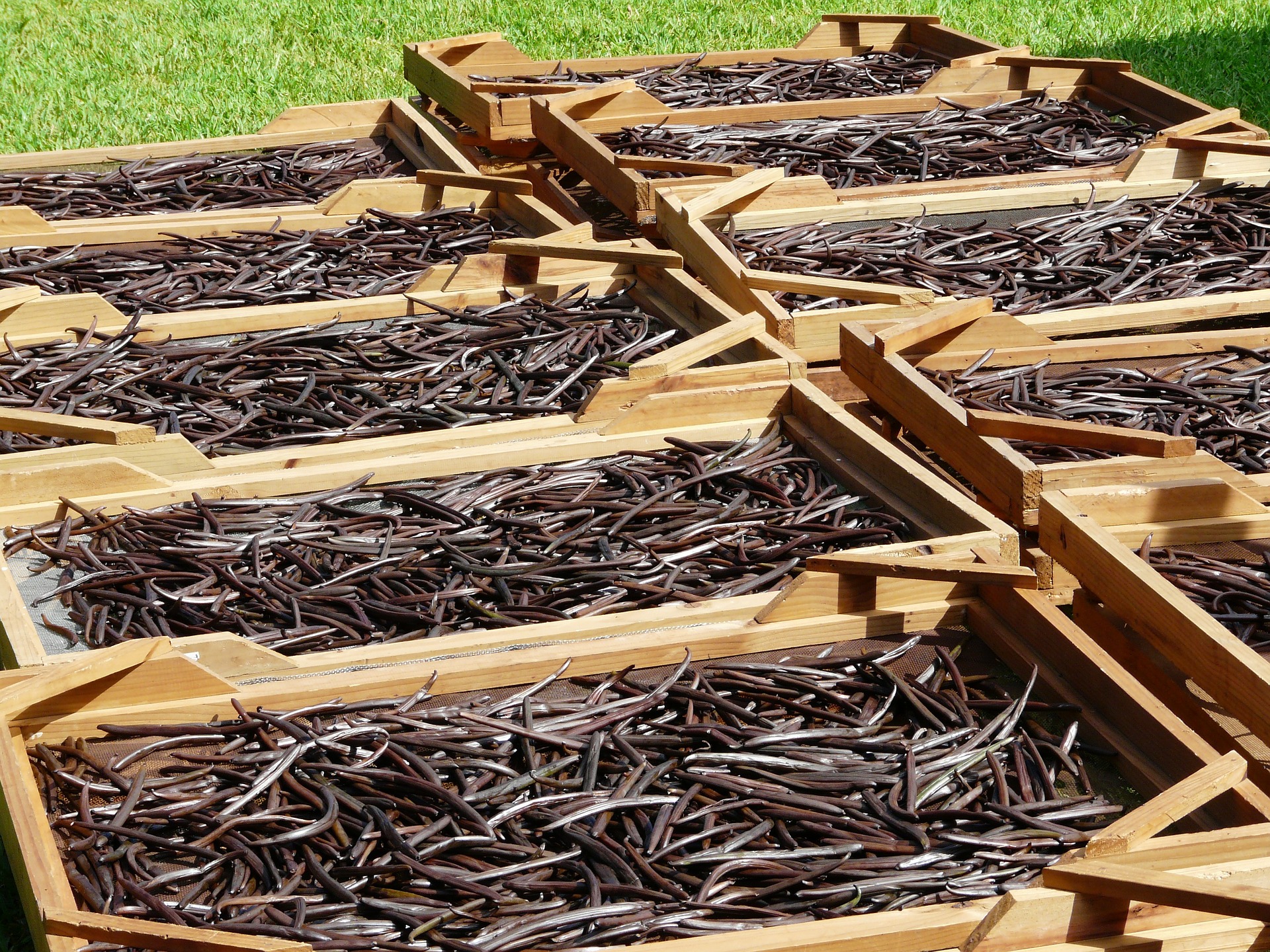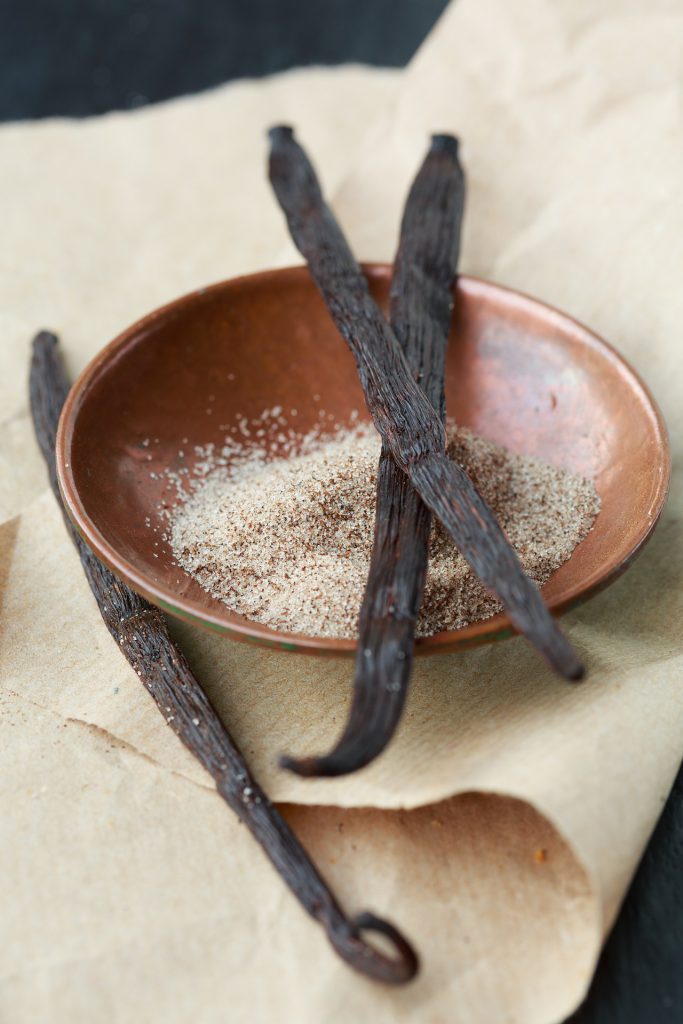Products
History of vanilla
The vanilla pods were first harvested from wild orchids in Mexico. It was soon realized that, when they fell to the ground when they were barely ripe, the long, thin fruits of these plants fermented under the cover of humus, giving off an exquisite aroma. The first mention of vanilla can be found in the Chronicles of the Aztec ruler Itzcoalt (1427-1440).
The Aztecs knew how to prepare it so that the spice would retain its aroma and they had probably used it for centuries in the preparation of cocoa drinks, in order to soften the bitterness of chocolate. In the Aztec language, vanilla was called “tlilxot chitl”, which means “black pod”. It would take more than a century for a European to give it a name with a Latin sound and pronounceable for the West.
It was Christopher Columbus who brought it back to our continent: during his third trip to “India” in 1518, his Spanish conquistador Hernán Cortès brought the first Mexican vanilla plants to Europe.
According to the testimony of an officer, when Hernán Cortes and his soldiers entered the city of Tenochtitlan, later to be called Mexico City, the Aztec emperor Montezuma allegedly offered them a vanilla chocolate drink in gold cups. Vanilla pods could also be found among the jewellery and feather trimmings. Pre-Columbians used vanilla as a diuretic and depurative. They attributed aphrodisiac and healing virtues to it.
For more than two centuries, Mexico maintained a monopoly on vanilla cultivation: all attempts to produce this orchid outside its original natural area ended in failure.
Until the 19th century, it was not known that it was a species of bee specific to Mexico that played the essential role of fertilizer in the formation of its fruit. It took botanists several years to realize that for vanilla, the male and female flower organs were separated by a waterproof membrane called “rostellum”.
It was only in 1836 that the Belgian botanist Charles Morren discovered the artificial pollination of orchids. A few years later, in 1841, on the island of Reunion Island, a young twelve-year-old Bourbonnais slave, Edmond Albius, managed alone to find a way to replace the Mélipone bee. His method is so simple that it is still the same as today: each flower must be fertilized manually, one by one!
And since then, it is the large island of Madagascar that has become the world’s leading producer of vanilla. It is a country known for producing the best vanilla thanks to the excellent soil composition in the northeast of the island, the ideal climate and the ancestral know-how of the farmers.
The vanilla tree and its flower
From a botanical point of view, vanilla is a monocotyledon, from the orchid family. Unlike many other orchids that are popular with ornamental plant lovers, this one produces small flowers of limited aesthetic interest.
Vanilla is a climbing vine. It clings to trees with its roots for better lighting conditions. However, it is not a parasite plant but an epiphytic (i.e. a plant that uses another tree as a support to grow).
I am talking here about “vanilla”, but it would be more accurate to talk about “vanillas”. Indeed, more than 110 species of vanilla have been recorded to date. However, despite this great diversity, commercial cultivation is essentially based on 2 species:
The so-called Madagascar vanilla (Vanilla planifolia), which is undoubtedly the best known, in any case it is the most sold species (see photo above, taken on the island of Curieuse in the Seychelles). Tahitian vanilla (Vanilla tahitentis) is a more confidential production, but is often considered the best vanilla in the world for its subtle and complex taste.
Tahitian Vanilla – The other vanilla
Considered as black gold, Tahitian vanilla is a spice that perfumes dishes, sweets, oils from Polynesian cuisines to the great tables of international chefs. It is also used in the composition of certain cosmetic products. Often cultivated under a shade because of its sensitivity to the sun, there are some vanilla plantations in Tahiti. However, despite its name “Tahitian vanilla”, most of the production comes from other high islands of French Polynesia, in the forefront of which is Tahaa Island. Tahaa, sometimes called “the vanilla island”, is a beautiful high island that is part of the archipelago of the windward islands (near Raiatea and not far from the very touristic Bora-Bora).


Vanilla produced in Taha’a offers taste qualities that are not found in any other Polynesian production. This is due to several explanations linked to a very particular climate, a specific quality of the soil, but also and above all to a particularly elaborate and carefully preserved know-how and production method.
The most wanted vanilla in the world
In our macarons, vanilla is a very soft touch. Its milky, round and sweet taste reassures us. It offers us a return to childhood from the first taste. How could you not love it?

